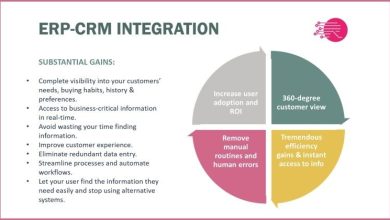Optimizing Treasury Management: A Simple Guide

In today’s increasingly complex and competitive business landscape, effective treasury management is crucial to ensure the financial stability and growth of any organization. Treasury management encompasses all activities related to the management of an organization’s cash, investments, and financial risks. By employing efficient treasury management services, businesses can optimize cash flow, minimize risk, and improve overall financial performance. This blog post will outline several strategies for effective corporate treasury management, providing valuable insights and guidance for businesses seeking to optimize their operations.
Cash Flow Forecasting
One of the key components of successful treasury management is accurate cash flow forecasting. Projecting the inflows and outflows of cash within an organization allow businesses to better plan their short-term and long-term financial strategies.
Methods for Cash Flow Forecasting
Two primary methods exist for cash flow forecasting: the direct and indirect methods. The direct method involves forecasting cash inflows and outflows from each individual source or use of cash, while the indirect method starts with net income and adjusts it for non-cash transactions and changes in working capital components. Each method has its advantages and disadvantages, and businesses must determine which approach best suits their needs.
Best Practices for Accurate Forecasting
To ensure that forecasts are accurate and reliable, businesses should adopt a few best practices. These include updating forecasts regularly, incorporating scenario analysis to assess potential future changes, and promoting collaboration between various departments to provide a comprehensive view of the organization’s cash position.
Liquidity Management
Maintaining an optimal level of liquidity is essential for business treasury management, as it enables organizations to meet their short-term financial obligations while also providing flexibility for growth opportunities.
Working Capital Management Strategies
Working capital management involves effectively managing a company’s inventory, receivables, and payables. By streamlining these components, organizations can improve their cash conversion cycle and maintain a healthy level of liquidity. Key strategies include implementing efficient inventory management processes, improving receivables collection, and strategically managing payables.
Short-term Investment Options
In addition to managing working capital, businesses should also consider short-term investment options to optimize their liquidity management. Money market funds and short-term bonds are popular investment vehicles that can help businesses generate returns on idle cash while still maintaining a high level of liquidity.
Risk Management
As part of a comprehensive approach to treasury management, businesses must also focus on identifying and mitigating various financial risks. Effective risk management strategies can protect an organization’s financial health and promote stability in the face of market volatility and economic fluctuations.
Foreign Exchange Risk Management
With globalization and expanding international operations, foreign exchange risk has become a prominent concern for many businesses. Hedging strategies, such as forward contracts, options contracts, and currency swaps, can help mitigate foreign exchange risk by locking in exchange rates or providing flexibility in managing currency exposure.
Interest Rate Risk Management
Interest rate risk, stemming from fluctuations in market interest rates, can have a significant impact on a company’s financial position. Interest rate swaps, caps, and floors, as well as bond investments, can help organizations manage their interest rate risk exposure and reduce potential losses.
Centralization of Treasury Functions
In an effort to optimize their corporate treasury management, many organizations are moving towards centralizing their treasury functions. This approach can provide a number of benefits, including improved control and visibility, enhanced decision-making capabilities, and cost reduction. To successfully centralize treasury management services, businesses should first identify their requirements and select an appropriate system. Once the system is in place, it is essential to provide adequate training and support to ensure that employees can effectively utilize the platform.
Leveraging Technology and Automation
Technology and automation play an increasingly vital role in treasury management optimization. By embracing fintech solutions and automating various processes, businesses can enhance efficiency, reduce human error, and gain valuable insights through data analysis. A variety of fintech solutions are available to assist businesses in optimizing their treasury management operations. Cash flow forecasting tools can automate and streamline the forecasting process, while payment automation software can expedite and simplify payment processing. Risk management platforms can help organizations assess and mitigate financial risks more effectively.
The benefits of automation in treasury management are numerous. Increased efficiency can result from the elimination of manual processes, reducing the likelihood of human errors that may impact financial performance. Additionally, automation can facilitate better data analysis, empowering businesses to make more informed decisions and adapt to changing market conditions.
Regular Monitoring and Performance Evaluation
In order to maintain optimal treasury management, businesses should regularly monitor and evaluate their performance. Establishing treasury management KPIs and conducting periodic reviews can help organizations identify areas for improvement and adapt to evolving business environments.
Establishing Treasury Management KPIs
Key performance indicators (KPIs) for treasury management may include metrics such as the cash conversion cycle, days sales outstanding, and days payable outstanding. These KPIs can help businesses track their progress towards achieving their financial goals and identify areas where further optimization may be necessary.
Reviewing Performance Periodically
Through regular performance evaluations, businesses can stay proactive in addressing potential issues and adapting to changes in the market. This ongoing process of monitoring and improvement is essential for maintaining optimal treasury management operations. In addition to internal evaluations, businesses should also consider benchmarking their performance against industry standards. This can provide valuable insights into how an organization’s treasury management practices compare to those of its peers and identify areas where further optimization may be beneficial.
Optimizing treasury management is an essential component of successful business operations. By implementing effective cash flow forecasting, liquidity management, risk management, and centralization strategies, businesses can achieve a more efficient and secure financial position. Additionally, leveraging technology and automation can further enhance treasury management operations, providing organizations with a competitive edge in today’s rapidly evolving business landscape. Businesses that embrace these strategies can ensure they are well-equipped to navigate the challenges and opportunities that lie ahead.











